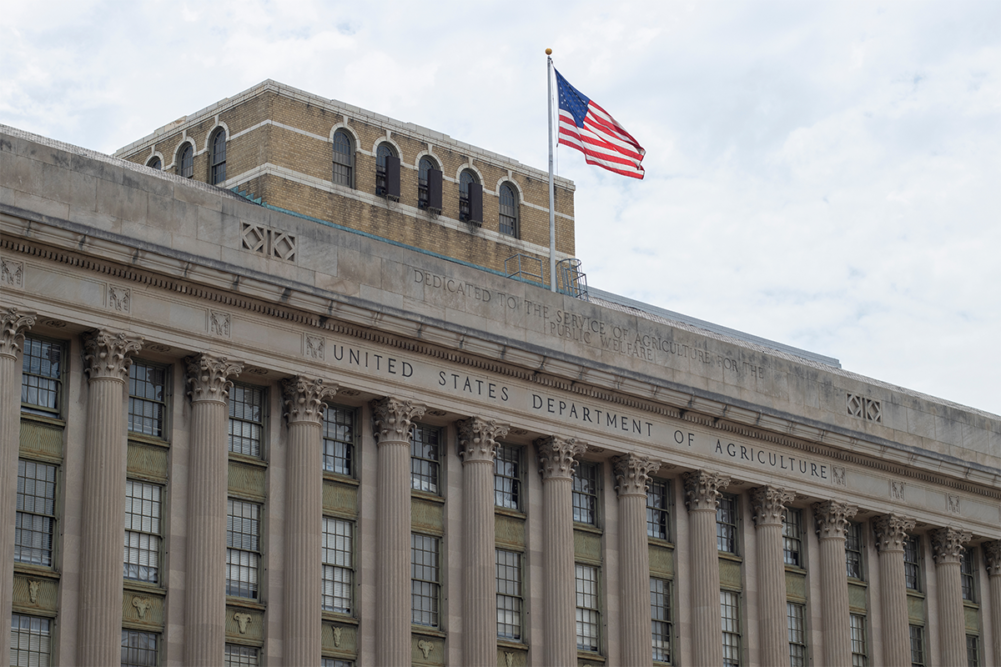DES MOINES, IOWA — The US Department of Agriculture is investing $2.3 billion in international trade and food assistance, announced Agriculture Secretary Tom Vilsack on Oct. 24.
Funding from the Commodity Credit Corp. (CCC) will go toward supporting US farmers and international communities. Vilsack said $1.3 billion will be used to support specialty crop industries to diversify export markets through the Regional Agricultural Promotion Program (RAPP), and $1 billion will address global food insecurity.
“The Commodity Credit Corporation continues to address the needs of American producers as significant and unpredictable challenges arise, including impacts to international commodities markets and global food insecurity in the wake of ongoing conflict and a changing climate,” Vilsack said. “The Commodity Credit Corporation and USDA’s market development and aid programs are critically important at this time, and with this additional support we can strengthen US agriculture’s presence in existing markets, open up new market opportunities, and build on our relationships and connections to ensure that high-quality American agriculture and food products reach where they are needed in the world.”
The announcement from Vilsack also detailed $1 billion in taxpayer funds to purchase commodities and work with USAID, — the lead federal agency on international emergency food aid programs — to ensure the supplies reach those most in need around the world. The US funds are intended to shore up ongoing efforts to address global hunger, and back US producers through the purchase of surplus commodities. The USDA said the donations will assist some areas where people are hungry due to war, droughts and other challenges.
The announcement comes at the heels of the 90th anniversary of the CCC, which was established on Oct. 17, 1933, to support farm income and prices, stabilize markets, and enhance farmers’ ability to market their commodities.
With the agricultural trade deficit projected to grow to $27.5 billion in 2024, USDA emphasized the importance of keeping ahead of the competition in commodity markets. RAPP will enable exporters to break into new markets and increase market share, the agency said. The Department cited analysis indicating for every $1 invested in export market development, exports are increased by $24.50.
USDA also noted the need to help fill gaps in global hunger, as an estimated 768 million people face chronic hunger. Since the United States produces more commodities than are consumed, USDA looks to reach the hungry with the excess food while also benefiting US agriculture through the purchase of surplus commodities.
Soon after Vilsack’s announcement, which was made at the World Food Prize’s Borlaug Dialogue in Des Moines, Iowa, agriculture groups began to voice praise for USDA’s investment.
The US Meat Export Federation (USMEF) thanked the USDA for prioritizing international market development.
“The USDA Market Access Program (MAP) and Foreign Market Development (FMD) Program have a proven track record of providing excellent, value-added returns to US producers, and more recently, the Agricultural Trade Promotion Program (ATP) helped US agriculture overcome trade obstacles and develop new markets,” said Dan Halstrom, USMEF president and chief executive officer. “With ATP funding coming to the end, new investments in foreign market development are very timely and much appreciated.”
The National Association of State Departments of Agriculture (NASDA) likewise applauded the establishment of RAPP.
“It’s important to know that for every $1 invested in export market development programs, $24 is returned in export revenue,” said Ted McKinney, CEO of NASDA. “Simply put, this program is a win for farmers, ranchers and the American economy because it will increase income and create more American jobs in the farm and food sector. This program will build upon the success of the Agricultural Trade Promotion Program, which is projected to generate $6.44 billion in farm cash receipts and nearly 14,780 jobs annually.”



